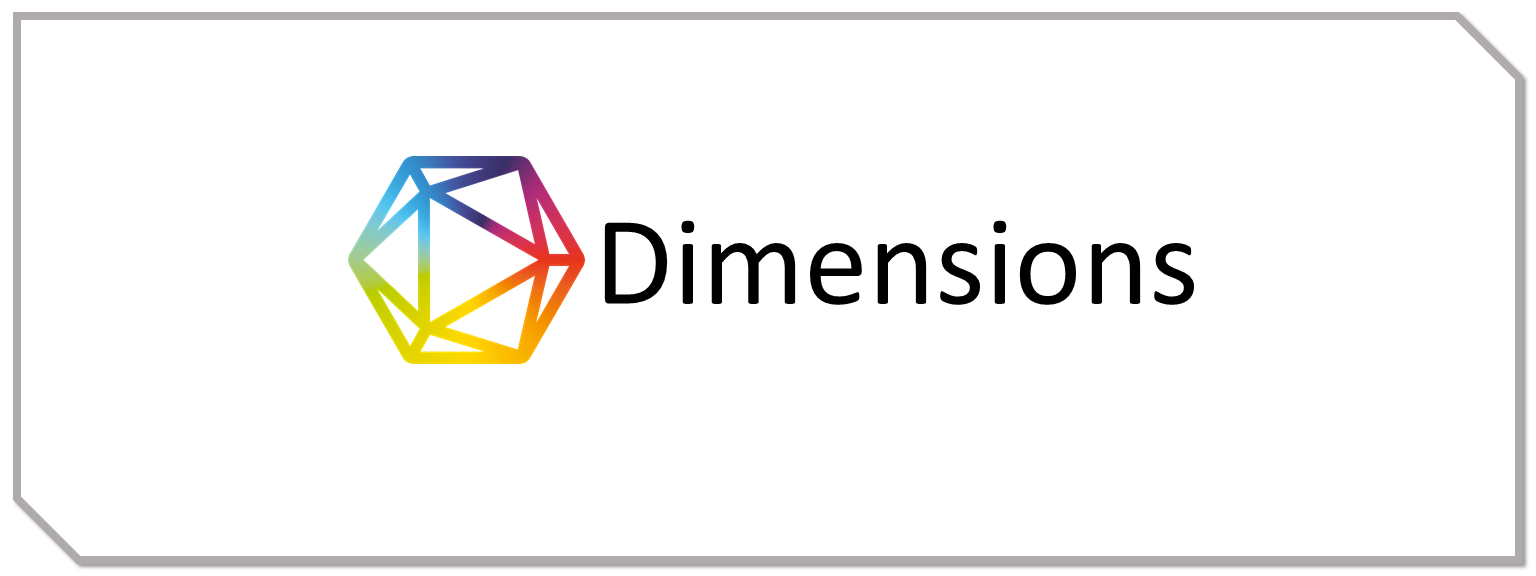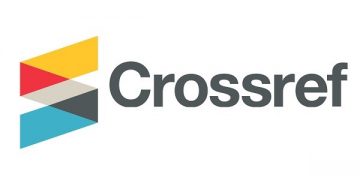Hubungan Hasil Belajar Elemen Gambar Teknis Dengan Kesiapan Kerja Sebagai Fashion Illustrator Siswa Kelas XI Fashion Design Di SMKN 1 Buduran Sidoarjo
DOI:
https://doi.org/10.61722/jmia.v2i4.6164Keywords:
technical drawing, fashion illustrator, learning outcomes, work readinessAbstract
Vocational education plays a strategic role in preparing graduates to compete in the workforce, including in the fashion industry. As the fashion industry becomes increasingly complex, vocational high school graduates are expected to possess fashion illustration competencies that meet industry demands, one of which is the mastery of Technical Drawing Elements. This study aims to examine the relationship between learning outcomes in Technical Drawing Elements and work readiness as fashion illustrators among 11th-grade Fashion Design students at SMKN 1 Buduran Sidoarjo. The research employed a quantitative approach, with data collected through documentation of learning outcomes and a work readiness questionnaire, then analyzed using correlation techniques. The results indicate a positive and significant relationship between learning outcomes in Technical Drawing Elements and work readiness as fashion illustrators. These findings suggest that improved academic achievement can contribute to students’ work readiness, although other factors such as practical experience and psychological maturity also play a significant role. The implications of this study highlight the importance of industry involvement in strengthening students’ practical experience, as well as the need for more representative measurements of work readiness by involving alumni and employers to enhance student competencies in the field of fashion design.
References
Afandi, A., Sultan, S., Asriadi, K., Mawardi, M., Ahmad, M., Ikhwanul, S., & Handayani, W. (2022). Hubungan hasil belajar kewirausahaan dan praktik kerja industri terhadap kesiapan kerja peserta didik SMK kompetensi keahlian pengelasan. JIRK: Journal of Innovation Research and Knowledge, 2(7), [halaman jika tersedia].
Agus dalam Fairuz, M. (2018). Kesiapan Lulusan SMK dalam Memasuki Dunia Kerja. Yogyakarta: Deepublish.
Ahmad, R. H., & Rachmawati, R. (2023). Analisis faktor-faktor yang mempengaruhi kesiapan kerja di industri fashion siswa Tata Busana SMK Negeri 6 Purworejo. Fashion and Fashion Education Journal (FFEJ), 12(1). Retrieved from https://journal.unnes.ac.id/sju/index.php/ffe/index
Alallah, M. A. (2016). Hubungan antara hasil belajar PRAKERIN dan hasil belajar mata pelajaran menggambar perangkat lunak dengan kesiapan kerja siswa SMK Negeri 2 Probolinggo (Diploma thesis, Universitas Negeri Malang). Retrieved from http://repository.um.ac.id/id/eprint/44189
Anoraga, P. (2006). Psikologi Kerja. Jakarta: Rineka Cipta.
Anoraga, P. (2006). Psikologi Kerja. Rineka Cipta
Arikunto, S. (2013). Dasar-Dasar Evaluasi Pendidikan. Jakarta: Bumi Aksara.
Aufi, K., & Irianto, A. (2023). Pengaruh hasil belajar dan soft skills terhadap kesiapan kerja siswa. Jurnal Ecogen, 6(1), 82–96.
Azky, S., & Mulyana, O. P. (2024). Faktor-faktor yang mempengaruhi kesiapan kerja mahasiswa: Literature review. INNOVATIVE: Journal of Social Science Research, 4(3), 3178–3192. Retrieved from https://j-innovative.org/index.php/Innovative
Bestari, A. G. (2023). Efektivitas model pembelajaran blended learning terhadap hasil belajar dan kemampuan menggambar ilustrasi mode mahasiswa. Syntax Literate: Jurnal Ilmiah Indonesia, 8(6)
Brady, R. (2009). Essential Skills for Career Readiness. Boston: Cengage Learning. (Judul disesuaikan)
Brady, R.P. (2009). Work Readiness Inventory. Indianapolis, IN: JIST Works Publishing.
Briggs, L. J. (2011). Instructional Design: Principles and Applications. New Jersey: Educational Technology Publications.
Burton, W. H. (1984). The Guidance of Learning Activities. New York: Appleton Century Crofts
Chaplin, J. P. (2002). Kamus Lengkap Psikologi (Terjemahan Kartini Kartono). Jakarta: Rajawali Press.
Cortellazzo, L., Bruni, E., & Zampieri, R. (2020). The role of leadership in a digitalized world: A review. Frontiers in Psychology, 11, 576–889. https://doi.org/10.3389/fpsyg.2020.576889
Creative Economy Agency (Bekraf) Indonesia. (2023). Laporan Industri Kreatif 2023: Tantangan dan Peluang Desain Mode di Era Digital. Jakarta: Bekraf Press
Danielson, K. (1986). Emphasis on Technical Skills in Fashion Education. Journal of Fashion Education, 3(1), 45–51.
Diantari, N. P. (2022). Digitalisasi dalam Dunia Kerja dan Pendidikan Vokasi. Jurnal Pendidikan Teknologi dan Kejuruan, 12(1), 22–30.
Dwi, A. (2013). Kontribusi hasil belajar analisis model busana terhadap minat menjadi pattern maker di butik Universitas Pendidikan Indonesia. Repository UPI. Retrieved from http://repository.upi.edu
Finch, C. R. (2008). Vocational Education: Purpose, Traditions, and Prospects. New York: Allyn and Bacon.
Hamalik, O. (1993). Psikologi Belajar dan Mengajar. Bandung: Sinar Baru Algesindo.
Hamalik, O. (2000). Proses Belajar Mengajar. Jakarta: Bumi Aksara.
Harjono dalam Mei, Y. (2016). Etos Kerja dalam Konteks Pendidikan dan Dunia Kerja. Jakarta: Bumi Aksara.
Heemyung, J. (2012). Mood Representation in Fashion Illustration: A Design Perspective. Journal of Visual Arts, 8(2), 55–67.
Hopkins, O. (2019). Fashion Illustration Techniques: Motivation and Visual Interpretation. London: Thames & Hudson.
International Academy of Design and Technology. (2011). Fashion Illustration Curriculum Guidelines. Florida: IADT Press.
Istira, N., Fadhilah, & Fitriana. (2023). Kontribusi hasil belajar cipta karya terhadap kesiapan mahasiswa membuka usaha dalam menciptakan produk busana di kalangan remaja. Jurnal Busana dan Budaya, 3(1), 323–333.
Kartono, K. (1991). Pengantar Metodologi Ilmu Sosial. Bandung: Mandar Maju.
Kartono, K., & Kartini, K. (1991). Pengantar Metodologi Ilmu Sosial. Bandung: Mandar Maju.
Kementerian Pendidikan, Kebudayaan, Riset, dan Teknologi Republik Indonesia. (2024). Profil Lulusan SMK Tata Busana di Era Industri Kreatif. Jakarta: Pusat Data dan Statistik Pendidikan
Kupisz, B., & Hołuj, A. (2021). Visual Effects in Fashion Illustration Using Mixed Media. Art Inquiry, 23(2), 110–125
Kusrianto, A. (2009). Pengantar desain komunikasi visual. Yogyakarta: Andi Offset.
Kuswana, W., Muspawi, & Lestari, S. (2020). Kesiapan Kerja Siswa SMK dalam Menghadapi Dunia Industri. Bandung: Alfabeta.
Lazuardi, M. A. (2021). Hubungan hasil belajar K3 dan prakerin terhadap kesiapan kerja pada siswa kelas XI Air Frame Power Plan di SMK Penerbangan Batam (Tesis Doktoral, Universitas Negeri Medan).
McKelvey, K., & Munslow, J. (1997). Fashion Design: Process, Innovation and Practice. London: Blackwell Science
Mears, P. (2010). Fashion Illustration: A Visual Communication Tool. Journal of Fashion Marketing and Management, 14(3), 390–403.
Mei, Y. (2016). Etos Kerja dalam Konteks Pendidikan dan Dunia Kerja. Jakarta: Bumi Aksara.
Mitchell, D. (2012). Work Readiness and Performance Evaluation in Vocational Education. New York: Routledge. (Judul disesuaikan, mohon verifikasi)
Montgomery, Douglas C., Elizabeth A. Peck, G. Geoffrey Vining. (2006). Introduction to Linear Regression Analysis Fourth Edition. New York: John Willey and Sons.
Morris, B. (2006). FASHION ILLUSTRATOR. Laurence King Publishing Ltd.
Muhammad, A. (2019). Kesiapan Kerja Mahasiswa dan Pengaruhnya Terhadap Dunia Industri. Yogyakarta: Deepublish. (Judul disesuaikan)
Murzyn-Kupisz, M., & Hołuj, D. (2021). Fashion Design Education and Sustainability: Towards an Equilibrium between Craftsmanship and Artistic and Business Skills? Education Sciences 11, 531.
Newton, E., Fan, J., & Yeung, K. (2002). Fashion Illustration Education: Student and Professional Perspectives. International Journal of Art & Design Education, 21(1), 69–77.
Niinimäki, K. (2011). Fashion Design Education and Sustainability: Towards an Integrated Approach. MDPI
Nugroho, A. (2016). Pengembangan Kompetensi Tenaga Kerja melalui Pendidikan Kejuruan. Surabaya: Unesa Press.
Nur’Aini, D., & Nikmah, C. (2020). Pengaruh penguasaan teknologi informasi dan prestasi belajar terhadap kesiapan kerja siswa SMK. Jurnal Pendidikan Manajemen Perkantoran, 5(2), 250–266.
Nurrahman, A. (2021). Etos Kerja dalam Pendidikan Vokasional. Bandung: Deepublish.
Panji. (2014). Kesiapan Kerja dan Tantangan Dunia Kerja Modern. Jakarta: Mitra Cendekia Press. (Judul disesuaikan, mohon verifikasi sumber asli)
Permata Sari, P., & Sontani, U. T. (2021). [Review of the article Hubungan hasil belajar dan kesiapan kerja di SMK]. Jurnal Pendidikan Manajemen Perkantoran, 6(1), 32–46. https://doi.org/10.17509/jpm.v4i2.18008
Potgieter, I. L., Coetzee, M., & Ferreira, N. (2023). University students’ digital world of work readiness in relation to their employability competency. Journal of Learning Development in Higher Education, (27). Retrieved from https://journal.aldinhe.ac.uk/index.php/jldhe/article/view/847
Rachmawati, A. (2013). Kontribusi hasil belajar fashion dan aksesoris terhadap kesiapan menjadi shoes designer. Universitas Pendidikan Indonesia. Retrieved from http://repository.upi.edu
Rahardjo, M. (2023). "Bagaimana Menulis Latar Belakang Penelitian yang Baik?" Humaniora UIN Malang.
Rahayu, Dwi. (2020). Analisis Korelasi Sederhana. Universitas Dian Nuswantoro. Diakses dari https://repository.dinus.ac.id
Riani, L., Amri, A., & Abdi, A. W. (2020). Hubungan prestasi belajar dan soft skills dengan kesiapan kerja mahasiswa jurusan Pendidikan Geografi FKIP Unsyiah. Jurnal Ilmiah Mahasiswa Pendidikan Geografi, 5(1).
Ridhani, R., & Karyaningsih, E. W. (2024). Hubungan prestasi praktik kerja industri dengan kesiapan kerja sekolah menengah kejuruan. Jurnal KELUARGA, 10(2), Agustus. https://doi.org/xx.xxxx/keluarga.v10i2.xxxx
Ridhani, R., & Karyaningsih, E. W. (2024). Hubungan prestasi praktik kerja industri dengan kesiapan kerja sekolah menengah kejuruan. Keluarga: Jurnal Ilmiah Pendidikan Kesejahteraan Keluarga, 10(2), 171–179.
Riza, N. (2024). Tren Ilustrasi Fashion di Indonesia: Menembus Pasar Digital. Fashion Journal Indonesia. Retrieved from: https://fashionjournal.id/tren-ilustrasi-fashion-2024/
Salamah, N. (2018). Kesiapan Kerja Mahasiswa dalam Menghadapi Dunia Kerja. Yogyakarta: Deepublish.
Sarah, L. S., & Riyanto, A. A. (2023). Kontribusi hasil belajar fashion multimedia terhadap kesiapan menjadi fashion visual merchandiser. [Nama jurnal jika tersedia, atau tulis “Artikel tidak dipublikasikan” jika hanya naskah], [volume dan nomor jika tersedia].
Sarah, L. S., & Riyanto, A. A. (n.d.). Kontribusi hasil belajar fashion multimedia terhadap kesiapan menjadi fashion visual merchandiser. Program Studi Pendidikan Tata Busana, Jurusan PKK, FPTK, UPI.
SPADA Kemdikbud. (2020). Pengujian Korelasi Sederhana. LMS-SPADA Indonesia. Diakses dari https://lmsspada.kemdiktisaintek.go.id
Stein, S. J., & Irvine, S. (2015). Emotional Intelligence and the bottom line. Journal of Organizational Culture, Communications and Conflict, 19(1), 55–65.
Sukardi. (1993). Dasar-dasar Kependidikan. Jakarta: Rineka Cipta.
Tech in Asia. (2023). Demand for Digital Illustrators and Designers Surges in Indonesia’s Creative Industry. Retrieved from: https://www.techinasia.com/
Uhar, S. (2012). Metode Penelitian Kuantitatif, Kualitatif, dan Tindakan. Bandung : PT. Refika Aditama
Winkel, W. S. (2005). Psikologi Pengajaran. Jakarta: Gramedia.
Winkel, W. S. dalam Hastuti, D. (2007). Psikologi Pendidikan dan Evaluasi Belajar. Jakarta: Gramedia Widiasarana Indonesia.
Winkel, W.S.(2003). Psikologi Pengajaran dan Evaluasi Belajar. Jakarta: Gramedia
Wolfe, M. (1989). Fashion Illustration: Contemporary Techniques and Applications. London: Prentice Hall.
Zhang, L., & Jin, R. (2023). Structural Features of Fashion Illustration in Modern Visual Communication. International Journal of Fashion Studies, 10(1), 45–60.
Downloads
Published
Issue
Section
License
Copyright (c) 2025 JURNAL MULTIDISIPLIN ILMU AKADEMIK

This work is licensed under a Creative Commons Attribution-ShareAlike 4.0 International License.











